-
 Bitcoin
Bitcoin $116400
-0.36% -
 Ethereum
Ethereum $4033
3.40% -
 XRP
XRP $3.302
-1.26% -
 Tether USDt
Tether USDt $1.000
-0.02% -
 BNB
BNB $796.1
1.67% -
 Solana
Solana $177.8
1.89% -
 USDC
USDC $0.9999
0.00% -
 Dogecoin
Dogecoin $0.2314
4.09% -
 TRON
TRON $0.3381
0.14% -
 Cardano
Cardano $0.7989
1.22% -
 Stellar
Stellar $0.4496
-1.84% -
 Chainlink
Chainlink $20.42
9.42% -
 Hyperliquid
Hyperliquid $41.17
0.88% -
 Sui
Sui $3.914
3.77% -
 Bitcoin Cash
Bitcoin Cash $584.7
1.52% -
 Hedera
Hedera $0.2632
-0.54% -
 Avalanche
Avalanche $24.09
3.40% -
 Ethena USDe
Ethena USDe $1.001
-0.02% -
 Litecoin
Litecoin $123.2
1.33% -
 Toncoin
Toncoin $3.318
-0.04% -
 UNUS SED LEO
UNUS SED LEO $8.984
-0.05% -
 Shiba Inu
Shiba Inu $0.00001323
2.85% -
 Uniswap
Uniswap $10.90
4.41% -
 Polkadot
Polkadot $3.999
3.34% -
 Dai
Dai $1.000
0.01% -
 Cronos
Cronos $0.1630
9.64% -
 Bitget Token
Bitget Token $4.484
0.82% -
 Monero
Monero $272.4
2.44% -
 Pepe
Pepe $0.00001173
6.03% -
 Aave
Aave $290.8
2.88%
What are the risks in the overbought area of RSI? What opportunities does the oversold area reveal?
RSI in crypto trading helps identify overbought/oversold conditions, but traders should use it with other indicators and manage risk to avoid false signals and volatility.
Jun 03, 2025 at 06:28 am
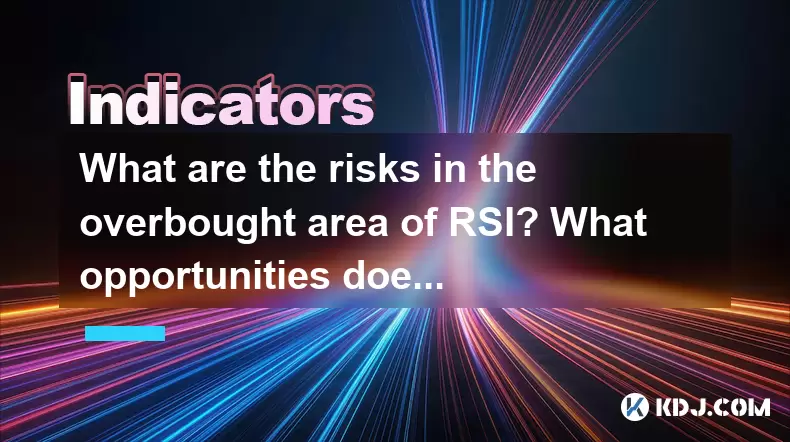
The Relative Strength Index (RSI) is a momentum oscillator used in technical analysis to measure the speed and change of price movements of a security. It is typically used to identify overbought or oversold conditions in the market, which can signal potential reversals. The RSI oscillates between 0 and 100, with readings above 70 indicating overbought conditions and readings below 30 indicating oversold conditions. Understanding the risks and opportunities associated with these areas can significantly enhance a trader's decision-making process.
Risks in the Overbought Area of RSI
When the RSI moves into the overbought area, it suggests that the asset may be overvalued and could be due for a price correction. This does not mean that a reversal is guaranteed, but it does indicate a higher risk of one occurring.
The primary risk in the overbought area is a potential price decline. When an asset's price rises rapidly, it often attracts more buyers, pushing the price even higher. However, this can lead to unsustainable price levels, and once the buying momentum slows, the price can fall sharply. For instance, if Bitcoin's RSI climbs above 70, it might indicate that the recent price surge has been too aggressive, and a correction could be imminent.
Another risk is the possibility of a false signal. The RSI can sometimes give false positives, where it indicates an overbought condition, but the price continues to rise. This can lead traders to sell too early, missing out on further gains. For example, during a strong bull market, the RSI might remain in the overbought area for an extended period, causing traders to exit their positions prematurely.
Overbought conditions can also lead to increased volatility. As the market becomes overbought, more traders may start to take profits, which can result in larger price swings. This increased volatility can be particularly risky for traders who are not prepared for sudden price movements. For instance, if Ethereum's RSI reaches over 70, the subsequent profit-taking could lead to significant price fluctuations, potentially causing losses for those who are not managing their risk appropriately.
Opportunities in the Oversold Area of RSI
Conversely, when the RSI moves into the oversold area, it suggests that the asset may be undervalued and could be due for a price rebound. This presents several opportunities for traders who are looking to capitalize on potential price increases.
The main opportunity in the oversold area is the potential for a price recovery. When an asset's price drops rapidly, it can attract more sellers, pushing the price even lower. However, once the selling pressure subsides, the price can rebound. For example, if the RSI for Litecoin drops below 30, it might indicate that the recent price decline has been too severe, and a recovery could be on the horizon.
Another opportunity is the potential for a trend reversal. If the RSI remains in the oversold area for an extended period, it can signal that the asset is at a significant support level. A subsequent move above 30 could indicate the start of a new bullish trend. For instance, if the RSI for Ripple remains below 30 for several weeks, a move back above this level could suggest that the downtrend is over and a new uptrend is beginning.
Oversold conditions can also provide buying opportunities at lower prices. Traders who are looking to enter a position in an asset can use the oversold RSI as a signal to buy at a potentially lower price. For example, if the RSI for Bitcoin Cash drops into the oversold area, it might present a good entry point for traders who believe in the long-term potential of the asset.
Using RSI in Cryptocurrency Trading
To effectively use the RSI in cryptocurrency trading, traders need to understand how to interpret its signals and combine them with other technical indicators for confirmation.
One common approach is to use the RSI in conjunction with moving averages. For example, if the RSI moves into the overbought area and the price is above a key moving average, it might suggest that a pullback is more likely. Conversely, if the RSI moves into the oversold area and the price is below a key moving average, it might indicate that a recovery is more likely.
Another approach is to use the RSI with volume indicators. High volume during an overbought or oversold condition can confirm the strength of the move. For instance, if Bitcoin's RSI moves into the overbought area with high trading volume, it might indicate that the price surge is more likely to be followed by a correction.
Divergence between the RSI and price can also provide valuable insights. If the price of an asset is making new highs, but the RSI is not, it might indicate that the uptrend is losing momentum and a reversal could be imminent. Similarly, if the price is making new lows, but the RSI is not, it might suggest that the downtrend is weakening and a recovery could be on the way.
Practical Examples of RSI in Action
To illustrate how the RSI can be used in real-world trading scenarios, let's look at a few examples involving popular cryptocurrencies.
Example 1: Bitcoin Overbought Signal
- Suppose Bitcoin's RSI moves above 70, indicating an overbought condition.
- A trader might consider this a signal to take profits or sell short, anticipating a price correction.
- If the price subsequently falls, the trader could benefit from the move. However, if the price continues to rise, the trader might miss out on further gains.
Example 2: Ethereum Oversold Signal
- Suppose Ethereum's RSI drops below 30, indicating an oversold condition.
- A trader might consider this a signal to buy, anticipating a price recovery.
- If the price subsequently rises, the trader could benefit from the move. However, if the price continues to fall, the trader might experience a loss.
Example 3: Litecoin RSI Divergence
- Suppose Litecoin's price is making new highs, but the RSI is not.
- A trader might interpret this as a bearish divergence, indicating that the uptrend is losing momentum.
- If the price subsequently falls, the trader could benefit from selling or shorting. However, if the price continues to rise, the trader might miss out on further gains.
Managing Risk with RSI
While the RSI can provide valuable insights into market conditions, it is important for traders to manage their risk effectively. This involves setting appropriate stop-loss orders, sizing positions correctly, and not relying solely on the RSI for trading decisions.
Setting stop-loss orders is crucial when trading based on RSI signals. For example, if a trader buys Ethereum when its RSI is in the oversold area, they should set a stop-loss order below the entry price to limit potential losses if the price continues to fall.
Position sizing is also important. Traders should not risk more than a small percentage of their trading capital on any single trade. For instance, if a trader is buying Bitcoin based on an oversold RSI signal, they should ensure that the position size is appropriate for their overall risk tolerance.
Combining the RSI with other indicators can help confirm signals and reduce the risk of false positives. For example, if a trader is considering selling Bitcoin when its RSI is in the overbought area, they might look for confirmation from other indicators, such as a bearish moving average crossover or a high volume spike.
Frequently Asked Questions
Q1: Can the RSI be used effectively in highly volatile cryptocurrency markets?
- Yes, the RSI can be particularly useful in volatile markets as it helps identify overbought and oversold conditions that are more common in such environments. However, traders should be aware that the RSI may give more frequent signals in volatile markets, and combining it with other indicators can help filter out false positives.
Q2: How often should the RSI be checked for trading decisions?
- The frequency of checking the RSI depends on the trader's strategy and time frame. For short-term traders, checking the RSI on an hourly or daily basis might be necessary. For longer-term traders, weekly or monthly checks might be sufficient. It's important to align the RSI checks with the overall trading strategy.
Q3: Is there a specific time frame that works best with the RSI in cryptocurrency trading?
- The effectiveness of the RSI can vary depending on the time frame used. Shorter time frames, such as 15-minute or hourly charts, can provide more frequent signals but may be more prone to false positives. Longer time frames, such as daily or weekly charts, can provide more reliable signals but may result in fewer trading opportunities. Traders should experiment with different time frames to find what works best for their strategy.
Q4: Can the RSI be used alone for making trading decisions in the cryptocurrency market?
- While the RSI can provide valuable insights, it is generally not recommended to use it alone for making trading decisions. Combining the RSI with other technical indicators, such as moving averages, volume indicators, and trend lines, can help confirm signals and reduce the risk of false positives. Additionally, fundamental analysis and market sentiment should also be considered when trading cryptocurrencies.
Disclaimer:info@kdj.com
The information provided is not trading advice. kdj.com does not assume any responsibility for any investments made based on the information provided in this article. Cryptocurrencies are highly volatile and it is highly recommended that you invest with caution after thorough research!
If you believe that the content used on this website infringes your copyright, please contact us immediately (info@kdj.com) and we will delete it promptly.
- Shiba Inu (SHIB) in the Crypto Landscape: Community, Trends, and Future Outlook
- 2025-08-09 20:30:12
- Lasers in Modern Warfare: Iron Beam and the Future of Defense
- 2025-08-09 20:30:12
- Maxi Doge Presale: The Meme Coin That's Pumping Iron and Prices!
- 2025-08-09 19:10:11
- Rare Coin Warning: Don't Get Fooled by That 1p Coin!
- 2025-08-09 18:50:12
- Cardano, Unilabs, and Tron Price: Decoding the Latest Crypto Buzz
- 2025-08-09 18:30:12
- Aerodrome Finance: Price Targets and the Bullish Channel - What's Next?
- 2025-08-09 18:50:12
Related knowledge

What does it mean when the Triple Moving Average (TRIX) turns downward but the price doesn't fall?
Aug 09,2025 at 12:42pm
Understanding the Triple Moving Average (TRIX) IndicatorThe Triple Moving Average, commonly known as TRIX, is a momentum oscillator designed to filter...

What does it mean when the Williams' oscillator repeatedly hits bottoms but fails to rebound?
Aug 09,2025 at 09:28am
Understanding the Williams %R OscillatorThe Williams %R oscillator, developed by Larry Williams, is a momentum indicator used in technical analysis to...
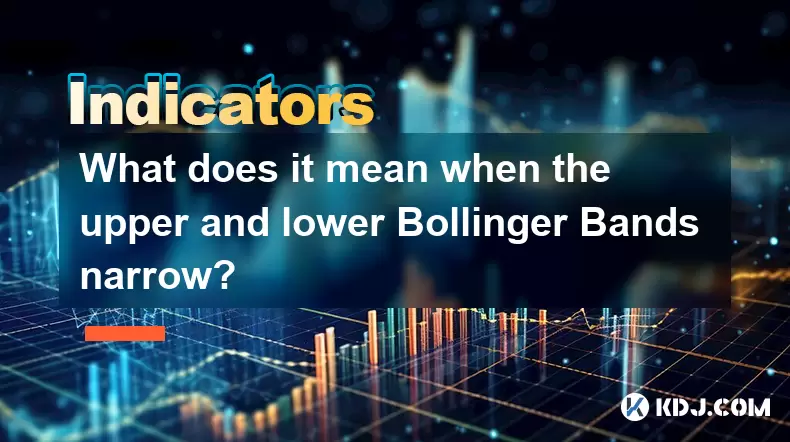
What does it mean when the upper and lower Bollinger Bands narrow?
Aug 09,2025 at 03:00pm
Understanding Bollinger Bands in Cryptocurrency TradingBollinger Bands are a widely used technical analysis tool in the cryptocurrency market, develop...
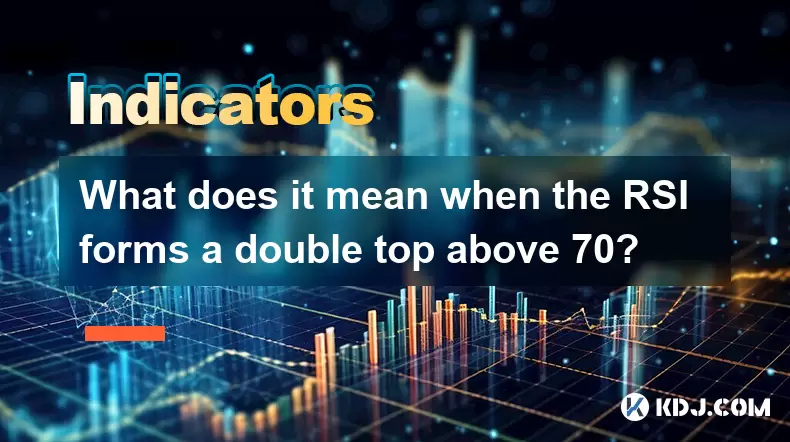
What does it mean when the RSI forms a double top above 70?
Aug 09,2025 at 05:50pm
Understanding the RSI and Overbought ConditionsThe Relative Strength Index (RSI) is a momentum oscillator that measures the speed and change of price ...
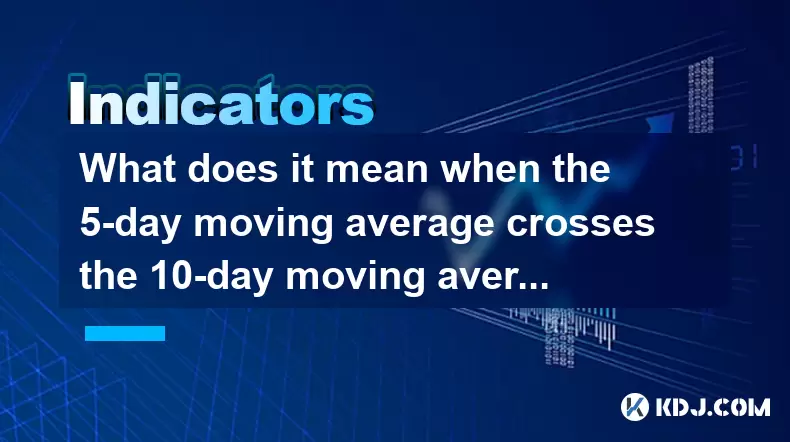
What does it mean when the 5-day moving average crosses the 10-day moving average but the 20-day moving average remains upward?
Aug 09,2025 at 03:35pm
Understanding Moving Averages in Cryptocurrency TradingMoving averages are foundational tools in technical analysis, especially within the cryptocurre...
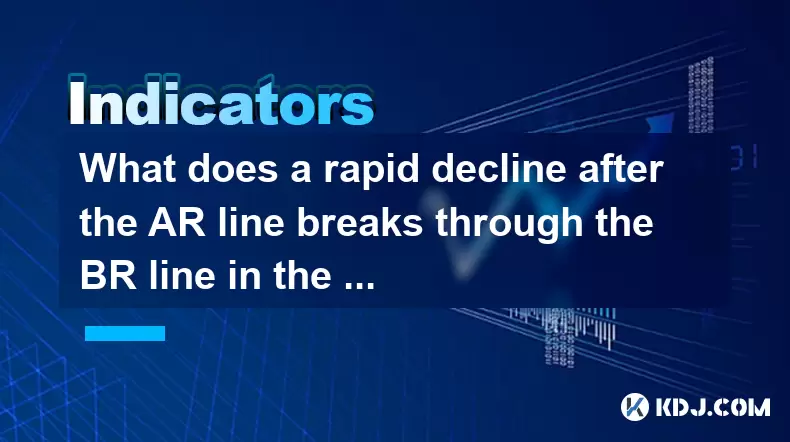
What does a rapid decline after the AR line breaks through the BR line in the ARBR indicator indicate?
Aug 09,2025 at 04:42pm
Understanding the ARBR Indicator ComponentsThe ARBR indicator is a technical analysis tool that combines two oscillators: the AR (Amplitude Ratio) and...

What does it mean when the Triple Moving Average (TRIX) turns downward but the price doesn't fall?
Aug 09,2025 at 12:42pm
Understanding the Triple Moving Average (TRIX) IndicatorThe Triple Moving Average, commonly known as TRIX, is a momentum oscillator designed to filter...

What does it mean when the Williams' oscillator repeatedly hits bottoms but fails to rebound?
Aug 09,2025 at 09:28am
Understanding the Williams %R OscillatorThe Williams %R oscillator, developed by Larry Williams, is a momentum indicator used in technical analysis to...

What does it mean when the upper and lower Bollinger Bands narrow?
Aug 09,2025 at 03:00pm
Understanding Bollinger Bands in Cryptocurrency TradingBollinger Bands are a widely used technical analysis tool in the cryptocurrency market, develop...

What does it mean when the RSI forms a double top above 70?
Aug 09,2025 at 05:50pm
Understanding the RSI and Overbought ConditionsThe Relative Strength Index (RSI) is a momentum oscillator that measures the speed and change of price ...

What does it mean when the 5-day moving average crosses the 10-day moving average but the 20-day moving average remains upward?
Aug 09,2025 at 03:35pm
Understanding Moving Averages in Cryptocurrency TradingMoving averages are foundational tools in technical analysis, especially within the cryptocurre...

What does a rapid decline after the AR line breaks through the BR line in the ARBR indicator indicate?
Aug 09,2025 at 04:42pm
Understanding the ARBR Indicator ComponentsThe ARBR indicator is a technical analysis tool that combines two oscillators: the AR (Amplitude Ratio) and...
See all articles

























































































